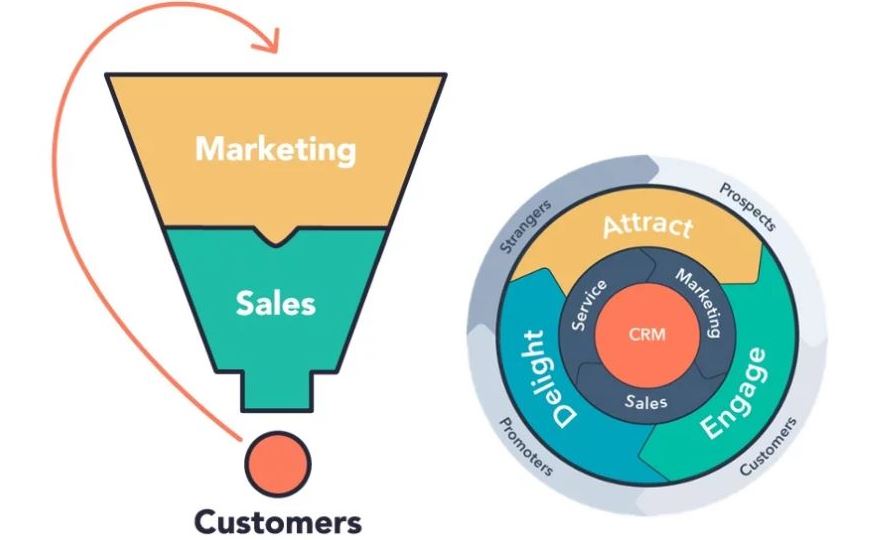How to Calculate Customer Lifetime Value – A Classic Approach
Why Customer Lifetime Value Matters
Customer Lifetime Value (LTV) is the single most important metric in marketing.
Why? Because it allows companies to rationalise their marketing, sales and service efforts.
In an age of complex analytics, funnels, flywheels, marketing automation and spreadsheets, this one marketing metric still rules them all.
Forward-thinking businesses use their LTV to make informed decisions that:
- shape long-term customer strategy
- predict revenue streams
- determine how much resource to invest into acquiring and servicing new customers.
Understanding the LTV of a customer is vital for every business.
How To Calculate Customer Lifetime Value
Customer lifetime value - sometimes referred to as LTV (formerly LCV or CLV) - differs from other data in that it is not strictly a measurable stat. Instead it is a prediction calculated using a set formula.
But just how is this all-important number calculated? To the relief of those who worry about maths, the calculation is relatively simple:
- determine your average purchase value - divide your company’s total revenue over a year by the number of purchases made.
- ascertain the average purchase frequency rate - by dividing the number of purchases made during the year by the number of unique customers who did business with you.
Still following? Great, because next we multiply the two sums. Average purchase value x average frequency rate will give you a customer value - more on that to come.
Once this is identified you’ll need to calculate an average customer lifespan. Use your CRM to work out a mean for the database as a whole.
To arrive at the all-important customer lifetime value you must multiply customer value by average customer lifespan. The resulting number reveals how much revenue you can reasonably expect from an average customer during the course of your business relationship with them.
To recap, customer value x average customer lifespan = customer lifetime value
To provide context and (hopefully) simplify matters, let’s use an example.
A small, part-time printing business may bring in £90,000 from 30 projects a year. In this instance the average purchase value is £3,000 - something calculated by dividing the total revenue for the year (£90,000) by the number of purchases (30).
The number of unique companies ordering in the year was 15. When dividing the overall number of purchases (30) by the number of unique ones (15) we find the average purchase frequency rate is 2.
Having calculated the average purchase value and the average purchase frequency rate, we multiply the two and discover the annual customer value which is £6,000.
Our local printers are trusted professionals and so inspire loyalty. Their average customer lifespan is a respectable 10 years.
We know that by multiplying this figure (10) by the annual customer value (£6,000) means we can unearth a customer lifetime value of £60,000.
What To Do With Customer Lifetime Value
Calculating LTV is one thing - acting upon it is another.
Any business hoping to grow will strive to improve this figure and constantly compare it to the cost of customer acquisition (CAC). This will reveal just how long it takes to recoup any initial investment in attracting new business. This may fundamentally impact how much you are prepared to invest in acquiring customers.
Improving customer retention will go a long way towards improving LTV. This is a collective responsibility:
- sales teams can set expectations that allow their colleagues to excel - rather than putting them under pressure
- delivery teams can ensure services are delivered ahead of schedule and to better-than-specified levels
- personalising frequent communications throughout the experience will ensure clients feel valued and reassured
- a customer service team can go the extra mile - not only solving a problem but explaining its root cause and how to avoid further inconvenience and disruption.
Each of the metrics provides a clear point of focus for growing your business because in summary there are only four ways to do that:
- increase the number of customers (which is expensive)
- increase average order value (which requires salesmanship)
- increase frequency of orders (which requires account management)
- increase retention/ lifespan (which requires you to keep customers very, very happy).
In summary, understanding customer lifetime value is vital, no matter what the industry. Improving lifetime value is the key to profitable growth and it’s very much a team game.
In future blog posts we'll examine how new ways of measuring customer lifetime value in a hyper-connected world.
In the meantime discover more about acquiring customers cost effectively and designing customer experiences to retain and delight customers by reading...







